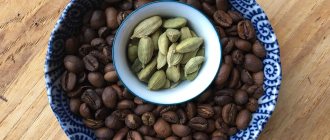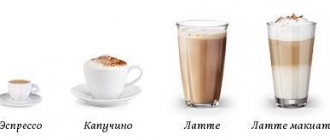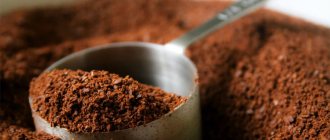Short description
It is necessary to pay attention to the vowels that are located in the suffixes of participles. These words were formed from different verbs, which is why they have different suffixes. The participle with the particle -yash comes from the verb chalk (to rub with chalk). The word with the affix -yushch was formed from an elementary conjugation. In verbal formations the vowels should be written -у, -у, -е. But in words of the second conjugation you will need the letters -a, -ya, -i. Basic example sentences:
- Our mutual friend, grinding a cue, was thinking about something. At this time, he could pray for good luck as his face was focused. Because of this, he could sharpen the cue a lot.
- A peasant who grinds regular flour can enjoy aromatic pastries and delicious pies. These people know how difficult it can be to grind grains that are too small, which may require outside help, as well as good protection against bread moths.
Depending on the meaning of the verb, these 2 options may contain a gross error. The common conjugation grind will look appropriate when talking about coffee or grain. But chalk has a completely different meaning, which is associated with the expression rub with chalk. To present information in writing, absolutely all the nuances must be taken into account.
The expressions melit and grind are used in Russian. They differ from each other not only in sound, but also in lexical meaning and compatibility with other words. It is necessary to determine in advance in what speech situation it would be appropriate to say grind and when to grind.
The word grind denotes a specific action and answers a logical question (what to do?). This verb has an imperfect form, which has several meanings:
- Grind the ingredient to turn it into powder.
- Carefully crush the grain, turning it into flour. The workers tried not to quarrel, since the strong wind prevented them from grinding grain to fill the empty vat.
You can grind coffee, grain, flour, medicinal herbs. In a figurative meaning, the word grind can appear in the phraseological unit grind with tongue (to talk idle talk, to chatter). In some cases, this verb can be replaced with melit, which is absolutely wrong. It is quite possible that this particular speech error arises by analogy with the present tense forms of the verb grind. In their root there is a specific alternation of the vowels -o and -e.
Main types of coffee grinding
The taste, aroma and density of the coffee drink depend on proper grinding. Modern coffee grinders allow you to obtain different types of grinding. The guideline is personal preference and method of preparation.
There are several grinding methods.
- Coarse (course grind, coarse) – in appearance it resembles sea salt. Used for brewing in French presses. This consistency is obtained by running the coffee grinder for 10 seconds. To truly enjoy the drink, the beans are cooked in 8 minutes. before cooking.
- Medium grind – resembles sugar. Suitable for pour over, Chemex and geyser coffee makers. The grinding time is 13 seconds, the shelf life of the medium grind is 6 minutes before cooking.
- Fine (thin or fine grind) – similar in appearance to sand, slightly larger than powder. Suitable for use in drip and cone coffee makers. The device operates for 13 seconds, the ground grains must be used within 4 minutes.
- Espresso (fine espresso grind) grinding is carried out to the state of iodized salt for 20-25 seconds. The method was invented specifically for brewing espresso coffee, which is prepared in an espresso machine in 30 seconds.
- Ultrafine (powdery or pulverized). Grinding is carried out until the dry berries become similar in appearance to ground cinnamon. Prepared within 40 seconds and used to prepare a drink in a cezve and in a cup (Warsaw style). Powdered grinding cannot be stored.
At home, it is difficult to achieve uniform grinding; experts recommend additionally sifting the resulting powder through a strainer.
Important! The higher the mound that comes out of the coffee grinder, the finer the grind.
Key Features
In the Russian language, the expression grinding is used in many sentences; why -yu is used can be figured out if you study all the important rules. The letter -o is written at the root of the original infinitive and related words. For example: ground rolled oats, ground coffee, ground flax. Only depending on the meaning of the sentence can you choose the most suitable option, which will not go out of the general context. For example:
- Victoria began grinding natural coffee to eventually brew a tasty and aromatic drink. Every morning she goes to the nearest park to breathe fresh air, where she can discuss important news.
- Early in the morning, our grandfather took the collected grain to the mill. He loves to watch it being ground in special machines with multiple functions.
- He didn’t seem to hear us and stubbornly continued to talk nonsense. Maxim spoke real nonsense, which means that we will never get the long-awaited translation of the text about the subsoil (part of the earth’s crust).
- Only with an electric meat grinder can you grind meat as efficiently and quickly as possible to prepare good minced meat.
The student needs to learn to conjugate and distinguish the verb from a similar example, melit. But in practice, this verb is related in meaning to the word chalk. This nuance cannot be ignored. A billiards player has to regularly chalk his cue so that during the next shot it does not accidentally slip off the ball. But the tailor grinds the buttons in order to sew them onto the clothes as correctly as possible.
Books on the Russian language contain many examples that were formed from the verb to grind. The participle is necessarily subject to morphological analysis, which can have several options, which is why the student needs to be able to independently choose the most appropriate analysis option based on the context of the sentence. The verb used to grind is of the first conjugation, which is why it has the corresponding endings.
But the verb melit ends in -it, which is why its conjugation occurs according to the second type. Each case is individual, since everything depends on the meaning of the sentence. A thorough study of all the rules and examples will help you better understand the intricacies of writing words that seem difficult at first glance. This approach is practiced in linguistics, where every nuance plays a huge role.
To grind or not to grind?
I have long been thinking about writing about the advantages and disadvantages of buying ground coffee, and now, finally, the time and opportunity have arisen to share with you my own (and not only) observations and knowledge on this issue.
I must admit that the motivation to write on this topic is not only that I think it is fundamentally wrong to order coffee by grinding (we will look at the reasons below), but also that grinding is the most labor-intensive part of our work, which sometimes takes up to 4 -6 hours time. So far, we do not have the resources to purchase a powerful industrial coffee grinder capable of processing many kilograms of coffee every hour. Our “workhorse” is now the heroine of many photographic materials on the Torrefacto blog – the La Cimbali coffee grinder (pictured on the left). Moreover, approximately 25% of all orders that we receive per week are for ground coffee.
I hope that, after weighing the negative effect of using this service, you may decide to purchase a burr coffee grinder and thereby gain new taste and aroma sensations from your usual Torrefacto coffee.
I hasten to assure those who are not ready to invest in coffee equipment: the grinding service will continue to be available free of charge.
So, why do we suggest you buy ground coffee from us if we ourselves do not recommend doing this? There are a number of good reasons for this.
Firstly, this happened historically. At the very beginning of the Torrefacto project, back in November 2011, we were driven by the desire to create the first and immediately best service in Russia for roasting coffee to order. It seemed to us then that the ability to order grinding as an additional and free service was an integral part of such a service.
Secondly, we understand that not everyone who loves coffee has a quality burr grinder at home, and they can be quite expensive. At the same time, only with the help of a good burr coffee grinder can you prepare truly delicious coffee, and also experiment by trying different varieties in a Turk, in a French press, in an espresso machine, etc.
Thirdly, it seemed unfair to us not to give the opportunity to try freshly roasted coffee to all those who have such a desire, but do not have a coffee grinder.
However, you need to be aware that when ordering ground coffee you will have to face two significant disadvantages.
On the one hand, it's clear that brewing coffee is a very personal process, and of course, our French Press grind (French Press Special Investigation) may not be the same as the one you use. What can we say about the grind for an espresso machine (“The first steps of an espresso maker”), which coffee gourmets select on expensive burr coffee grinders, pouring out more than one serving of espresso.
On the other hand, and more importantly, the taste and aroma of ground coffee fades at lightning speed.
A little theory. In coffee beans, all the aroma and taste is concentrated in essential oils. It is they who create the characteristic chocolate shade during roasting. After roasting, most of the oils remain inside the grain, where the outer shell reliably protects them from contact with air. Once the coffee is ground, the essential oils quickly and inevitably come into contact with the air. Oxidation processes rapidly deprive ground coffee of the pleasant taste and aroma of freshly roasted beans, literally in a matter of hours.
I decided to conduct a small experiment that would clearly demonstrate this effect.
I ground 50g of freshly roasted Costa Rica Alzacia coffee on Tuesday, October 16th, 5 days ago, poured it into a glass and put it in the kitchen cupboard. Coffee could come into free contact with air, but was protected from light and moisture, which could have an additional destructive effect on the taste and aroma.
You might argue that this is not the same as ordering a bag of ground coffee from us and opening it before drinking. I assure you that as soon as you open such a package, the essential oils already released from the ground beans will immediately come out.
The comparison was made with coffee of the same variety, ground immediately before preparation. In both cases I used Chemex (“Chem with Chemex”). After letting the drinks cool a little, I conducted a parallel tasting and entered my observations into a table.
| Costa Rica Alsatia (ground 10/16/12) | Costa Rica Alsatia (ground before cooking) | |
| Aroma | Barely noticeable coffee aroma, nothing special to say | Bready, floral and citrus notes |
| Taste | Watery, dull, sourness almost invisible | Bright, expressive acidity, excellent richness and balance, long “sweet” aftertaste, the receptors rejoice |
| Color | Lighter compared to freshly ground sample | Dark red-brown shades of the drink characteristic of Chemex |
| Preparation | The time it takes for water in a Chemex to pass through this coffee is half that of a freshly ground sample. Pre-extraction in a Chemex showed that water simply passes through the ground coffee | During pre-extraction, the ground coffee swells, significantly increasing in size, and real “volcanic activity” is observed. The water passage time corresponds to the norm for freshly roasted, freshly ground coffee - 3 minutes 25 seconds |
It’s difficult to put all the impressions from the tasting into a table. We can say this: a drink made from coffee ground on 10/16/12 is rather unpleasant. I didn't even finish it. The difference with the freshly ground sample (by the way, roasted on 10/13) was so great that even a person who doesn’t understand coffee at all could distinguish fresh coffee from stale coffee.
Once again, I was convinced that Chemex, like no other method of preparation previously tried, exposes all the advantages and disadvantages of coffee. You can immediately determine the freshness and correct roasting, and it is easier to catch all the notes present in the taste and aroma of the drink.
In conclusion, I would like to say the following. Like all other experiments with coffee, this tasting reflects my subjective feelings. I urge those of you who order ground coffee from us to conduct a similar experiment at home and verify the correctness of my conclusions. More than likely, you will discover something new, as is always the case when you seek the truth.
Happy coffee drinking everyone!
Morphological analysis
Quite often in test work on the Russian language there is a need to perform a qualitative analysis of a specific example. Morphological analysis is a detailed description of a word form. In this case, changeable and constant features must be determined, as well as the semantic role in a phrase or sentence.
Word parsing must be performed in the following sequence:
- The part of speech to which the expression refers is recorded.
- The initial form and morphological characteristics are determined.
- Constant characteristics are established (inanimate or animate, common noun or proper, declension, gender).
- The case and number are recorded.
- At the final stage, all that remains is to determine the syntactic role of the word.
This review plan was compiled by experts based on generally accepted rules, since everything depends on the class and teacher preferences.
Performing a morphological analysis of the word grinding is quite easy and quick:
- The part of speech is the participle, which was formed from the verb to grind.
- Main morphological features: initial form - grinding (masculine nominative singular); inconsistent features - nominative case, singular, full form, masculine; constant signs - present tense, imperfect form.
- Syntactic role - can be performed by absolutely any member of the sentence, since you need to look at the context.
On the Internet you can find special programs that perform morphological analysis of words automatically. Elementary writing of words with spelling patterns protects the student from making gross mistakes. Before analyzing the example being studied by composition, you need to determine its part of speech. Otherwise, the student may become confused in the analysis being performed, as a result of which the final grade for the completed work will be significantly reduced. It is forbidden to use the words dare and molet.
About coffee grinders
A new question arises: will the machine grind or grind? Let's look at the dictionary again. The correct word would be “grind”.
Taste qualities directly depend on grinding. And it’s better to grind the grains yourself. The grinding machine has varieties and is divided into: knife, millstone and manual. In knife machines, grains are crushed with sharp knives. The longer the coffee grinder runs, the finer the grind will be. The knives of millstones simply grind the grains, bringing everything to a homogeneous mixture. The manual coffee grinder is equipped with two knives: top and bottom. Here you can adjust the grinding quality yourself.
Phonetic approach
Analyzing a word using this technology increasingly causes certain difficulties, although this is the task that students in grades 5–9 often perform. The essence of phonetic analysis is not only to hear, but also to transfer the sound of a word onto paper. At the initial stage, students can make numerous mistakes due to the fact that the letter does not always correspond to the pronunciation.
The key feature of phonetic analysis is maximum concentration on correct pronunciation. A spoken unit of speech that is not only heard, but also pronounced - sounds. An elementary symbolic image of audible material - letters.
The traditional spelling and subsequent pronunciation of the same word most often do not coincide. There can be much more or less letters than sounds. This discrepancy can well be explained by the current rules that affect the orthoepic and orthographic categories. But phonetics reserves the rules of pronunciation.
The correct phonetic analysis of the word grinding can be completed in just a few minutes. The example includes 3 syllables: grinding. The transcription is as follows - [m'el'ush'iy']. The word contains 7 letters and 7 sounds. Analysis of the word grinding in accordance with phonetic norms looks like this:
- M - [m'] - consonant, sonorant. soft, par.
- E - [e] - vowel, stressed.
- L - [l'] - consonant, sonorant. soft parn.,
- Yu - [u'] - vowel, unvoiced.
- Ш - [ш'] - agrees, deaf, unpaired. soft unpaired
- And - [and'] - vowel, unstressed.
- J - [th'] - consonant, sonorant, soft, unpaired.
For complete figurative perception, as well as a guaranteed understanding of the structure of a speech unit, specialists created a sound model of the word. It is best to resort to developing a scheme in the form of original multi-colored rectangular and square cards. The sound model consists of cards laid out in a clear sequence. This approach is actively used in kindergartens and primary classes. In addition, the scheme for parsing words into sounds and letters helps to radically improve the pronunciation of consonants and vowels.
Word analysis helps a person develop his phonetic ear, strengthen and improve his memory, and also better understand some important spelling rules. Knowledge of a basic parsing algorithm allows you to complete the task quickly and efficiently.
Morphemic analysis
In the process of parsing a word, a kind of analysis of morphemes and its components is carried out. At the final stage, the student can much better understand the structure of the example and related words, as well as analyze as much as possible and learn to independently use in practice the mechanisms of word formation in the Russian language. Morpheme is the minimum indivisible significant part of a word that is needed to form new forms.
Some textbooks describe in detail information about morphemic parsing and word analysis as identical parameters. But in practice everything is a little different. During these two analyses, a number of significant differences can be noted. For morphemic analysis, the word is used without any changes, but for analysis by composition, the initial form is required. During word-formation analysis, it is necessary to indicate whether the expression involved is derivative or not.
The morphemic analysis of the word grinding is distinguished by its simplicity: root (mel) + suffix (yush) + ending (ii). The basis is grinding. Method of word formation: suffixal. There is a certain order of morphemic analysis, which is better not to change even if you want to perform a more simplified analysis. It is necessary to follow the instructions, as in this case you will be able to avoid mistakes.
You need to understand that a word cannot have more than one prefix and suffix. To be able to distinguish between these concepts, you need to try to find the closest predecessor of this word in the word-formation chain. To find the ending you need to change the example. The student may encounter a situation where this parameter is null. Suffixes are located after the root and they serve to form new expressions. Finding this component of morphemic analysis is quite simple. A suffix is the part of a word that is located between the root and the ending.
Universal and multifaceted morphemics deals with the analysis of words in parts. In various dictations, exams and presentations you can often find a task that concerns the analysis of the word being studied. If the example is changeable, the inflection or ending is set. Otherwise, it will not be possible to perform a qualitative analysis.
Grind size, extraction and flavor
When making coffee, our main goal is to achieve controlled extraction. The final taste of our cup will depend on how many components we extract from the roasted beans into our drink, which will perfectly combine the optimal amount of coffee and water, brewing time, water temperature, grind size and many other important factors.
The very process of grinding coffee beans increases the surface contact of coffee particles with water. And the finer or coarser the particles, the more or less quickly the ground coffee passes water through itself, this greatly affects the brewing time, as well as the efficiency of extraction.
Coarse grinding creates large spaces between the coffee particles, which in turn allows water to pass through them faster. Less surface area of coffee particles interacting with water and shorter brewing times result in poor coffee extraction. On the other hand, fine grinding has particles closer together. This means that water takes longer to pass through them and the surface area also increases, resulting in greater extraction.
Is your drink sour? This means that you have taken the grind too coarse - reduce it. What if you feel bitter? You have the opposite problem, try grinding coarser.
But there are several factors that help determine the appropriate degree of grinding, more precisely. Let's take a look at them.
The life of a roasted coffee bean.











